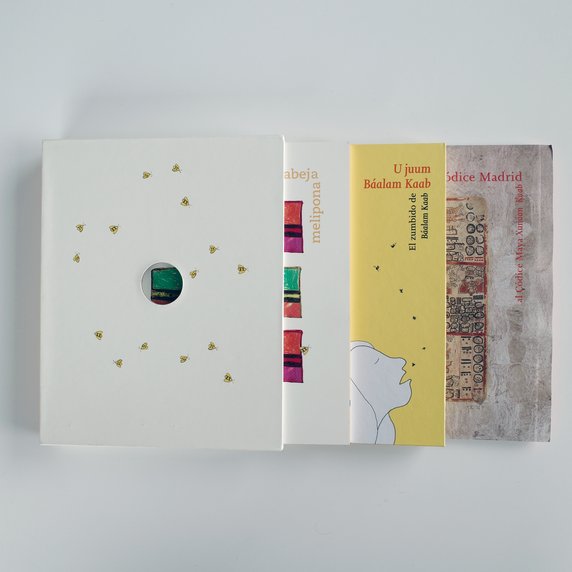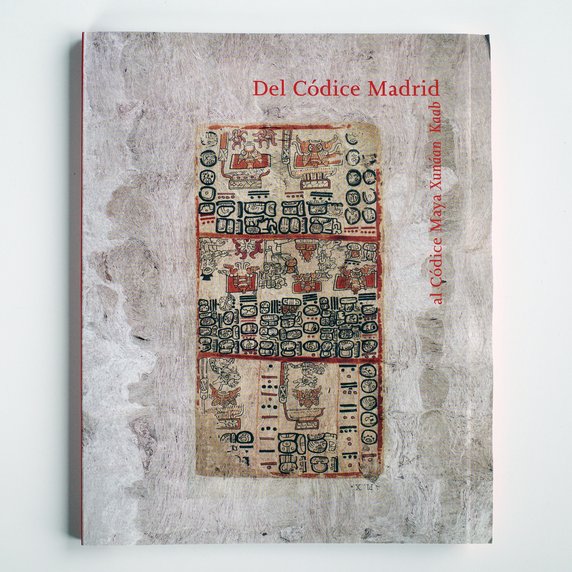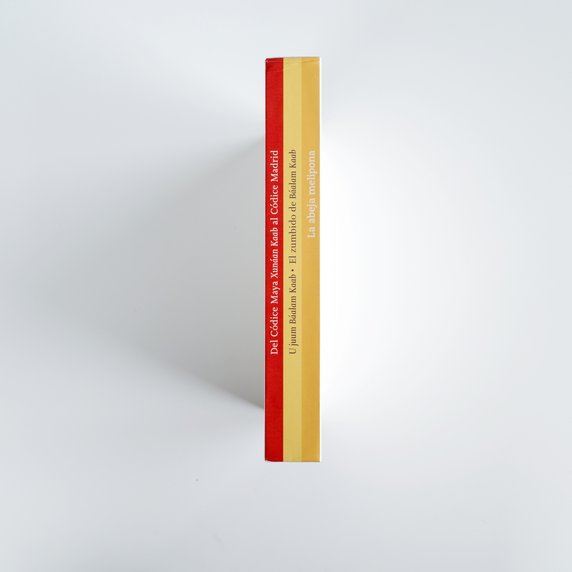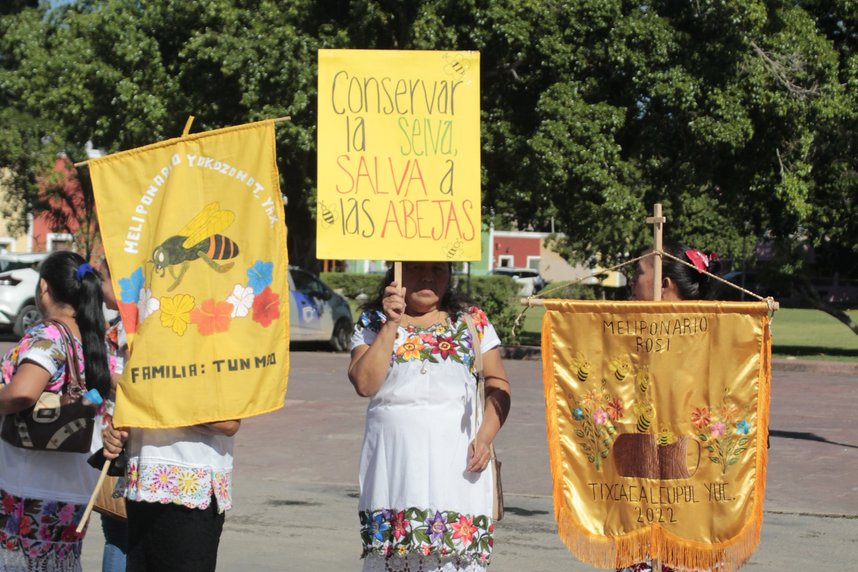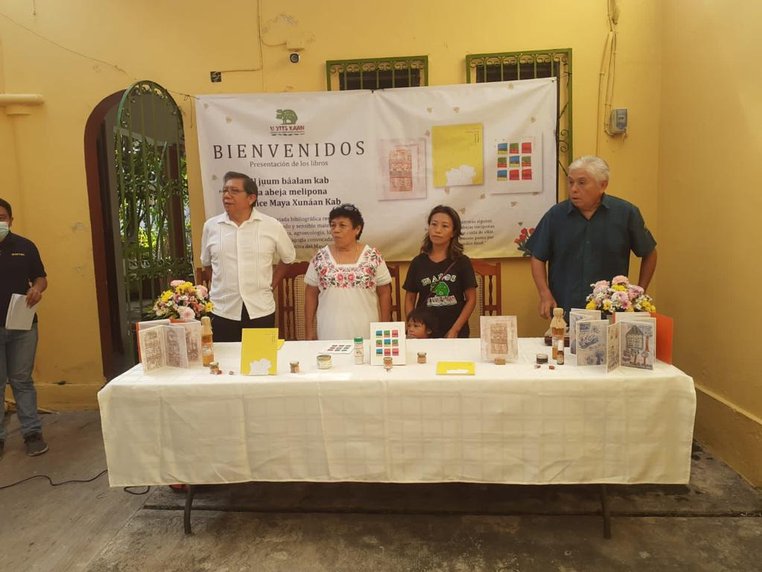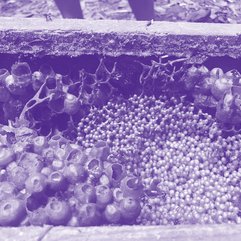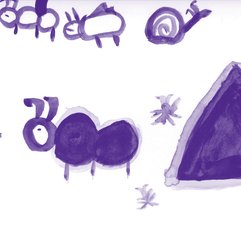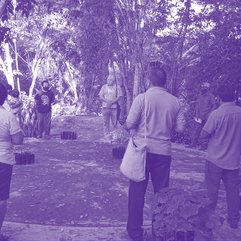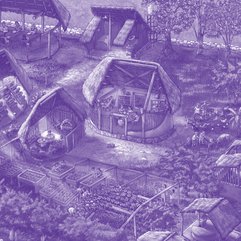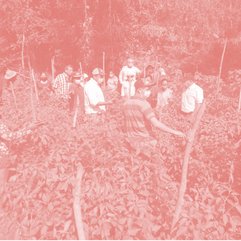The Making of the Book Box “El Zumbido de Báalam Kaab”
With the intention of sharing knowledges around the Melipona bee and meliponicultura between different communities and meliponarios, the agroecological school U Yits Ka'an envisioned making a multigenerational picture book, based on to the outcomes of various workshops and learning experiences that happened as part of the facilitation process "Meliponicultura": Stories and Knowledge Exchange.
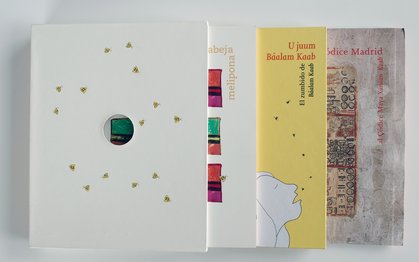

Julián Dzul Nah and Abrahan Collí Tun shared the needs of the communities they work with. Their critical advice and knowledge on different didactic tools was crucial for the production process. Editor and graphic designer Mónica Vázquez brought her expertise on illustrated publications into the process and eventually the picture book turned into a book box. This box, which references the hollow tree logs the meliponiculturists use to keep the Melipona bee (jobones), contains three books:
An accordion book juxtaposing the form of the Madrid Codex with the children’s Codex Maya Xunáan Kaab, a leporello produced in a workshop in Maní; an homage to the Melipona bee in the form of a poem; and a non-fiction book including facts about the Melipona bee, its historic and current relation to the Maya, as well as the role it plays within the ecosystem as a pollinator.

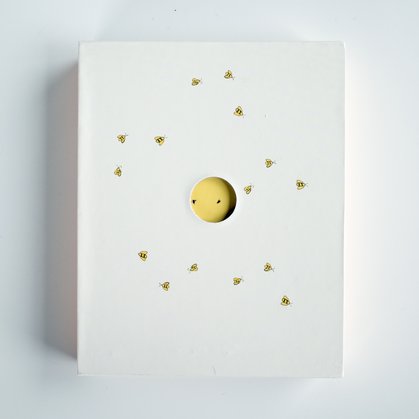 book box on the Melipona bee
book box on the Melipona bee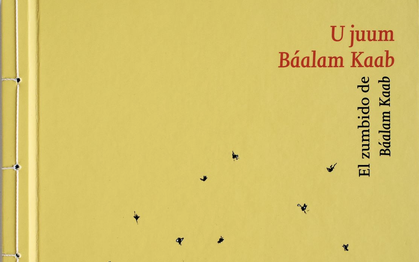

Sasil Sánchez Chan and Daniela Cano wrote a poem dedicated to the Melipona bee, highlighting the sound of the bee and drawing connections to the onomatopoeic nature of Yucatec Maya (as a spoken language). Their poem was edited by poet María Elisa Chavarrea Chim. Through listening to the poem and being in conversation with the authors, artist Mauricio Collí offered his visual interpretation.

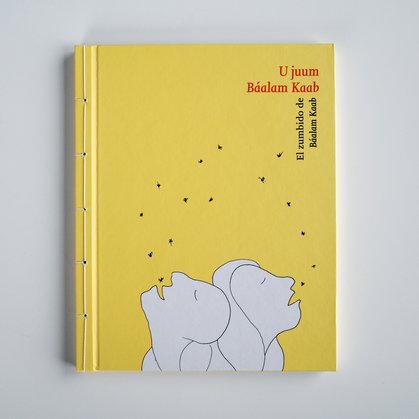 cover of the poem "U juum Báalam Kaab
cover of the poem "U juum Báalam Kaab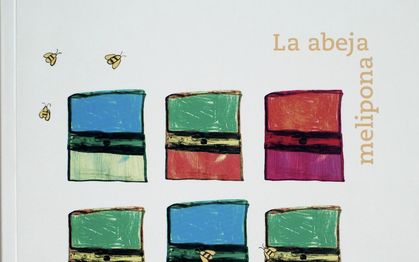

La abeja melipona is a non-fiction book with facts about the melipona bee and its importance as a pollinator.

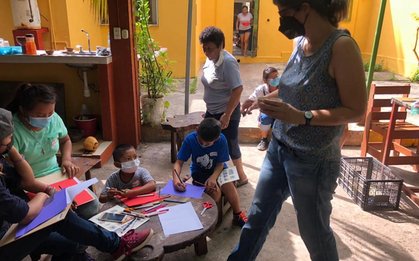 Drawing workshop with children
Drawing workshop with childrenAll the illustrations in this book are childrens drawings that came out of the workshop-series Children and Meliponicultura, where the children visited local beekeepers and learned about the Melipona bee's relationship with the environment, its habitat, to traditional beekeeping practices and other aspects of meliponicultura.

 La abeja melipona book
La abeja melipona book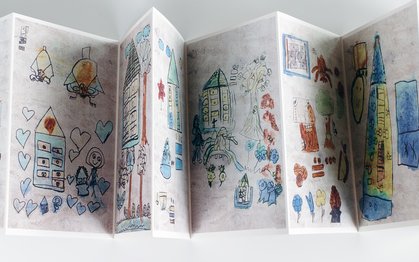

The agroecological school U Yits Ka'an organized together with Julián Dzul Nah and Abrahán Colli Tún organized a workshop for children on Melipona bees focused on different forms of storing memory, such as memories that are written into the landscape, pre-Columbian texts, ceremonies, sacred places, and milpa seeds. Although the colonizers burned much of the ancestral Maya writings in the town close to where the school is located, a few written testimonies have survived. Together with writer and epigraphist Daniela Esther Cano Chan the children have been studying representations of bees, beekeeping, glyphs, and deities in the so-called Madrid Codex, as well as observing bees and beekeeping. Working from the question, “How do we communicate the life of the bees to future generations?” they created their own codex, the Codex Maya Xunáan Kaab. The accordeon book Del Códice Madrid al Códice Maya Xunáan Kaab is juxtaposing the Madrid Codex with the children’s Codex Maya Xunáan Kaab.
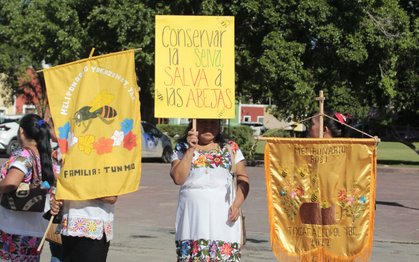

The book box "El zumbido de Baláan Kaab" is now being distributed among communities,initiatives, beekepers, pedagogues and other multipliers throughout Yucatán, Quintana Roo, Chiapas and even further. It will also be activated through workshops and other collective activities. Atilano Ceballos Loeza says: “This shows the resonance the book had after it was presented at the Melipona Festival in October, and the commitment of the community to create more awareness of the Melipona bee”.

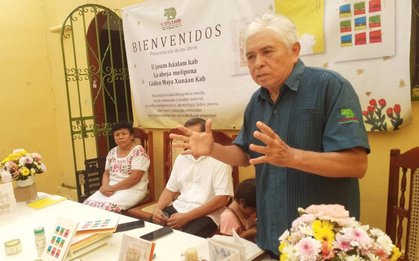 Press conference about the toolbox “El Zumbido de Baláan Kaab”
Press conference about the toolbox “El Zumbido de Baláan Kaab”
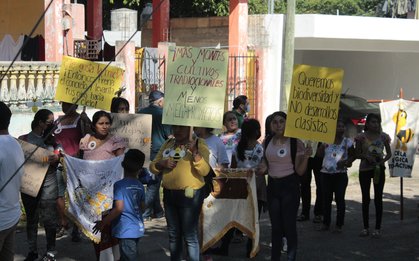 During the Xunaan Kaab Festival on October 29th 2022
During the Xunaan Kaab Festival on October 29th 2022
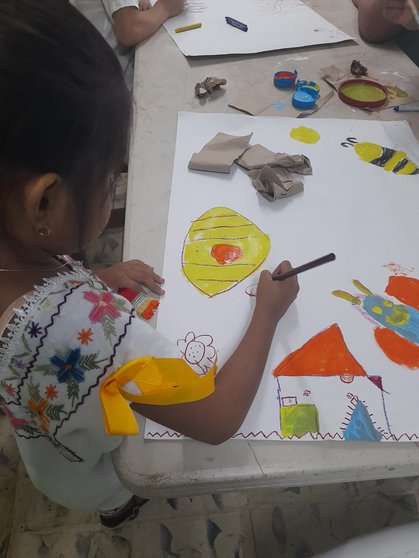 Workshop to activate the toolbox “El Zumbido de Baláan Kaab” during the Xuaan Kaab Festival on October 29th 2022
Workshop to activate the toolbox “El Zumbido de Baláan Kaab” during the Xuaan Kaab Festival on October 29th 2022


